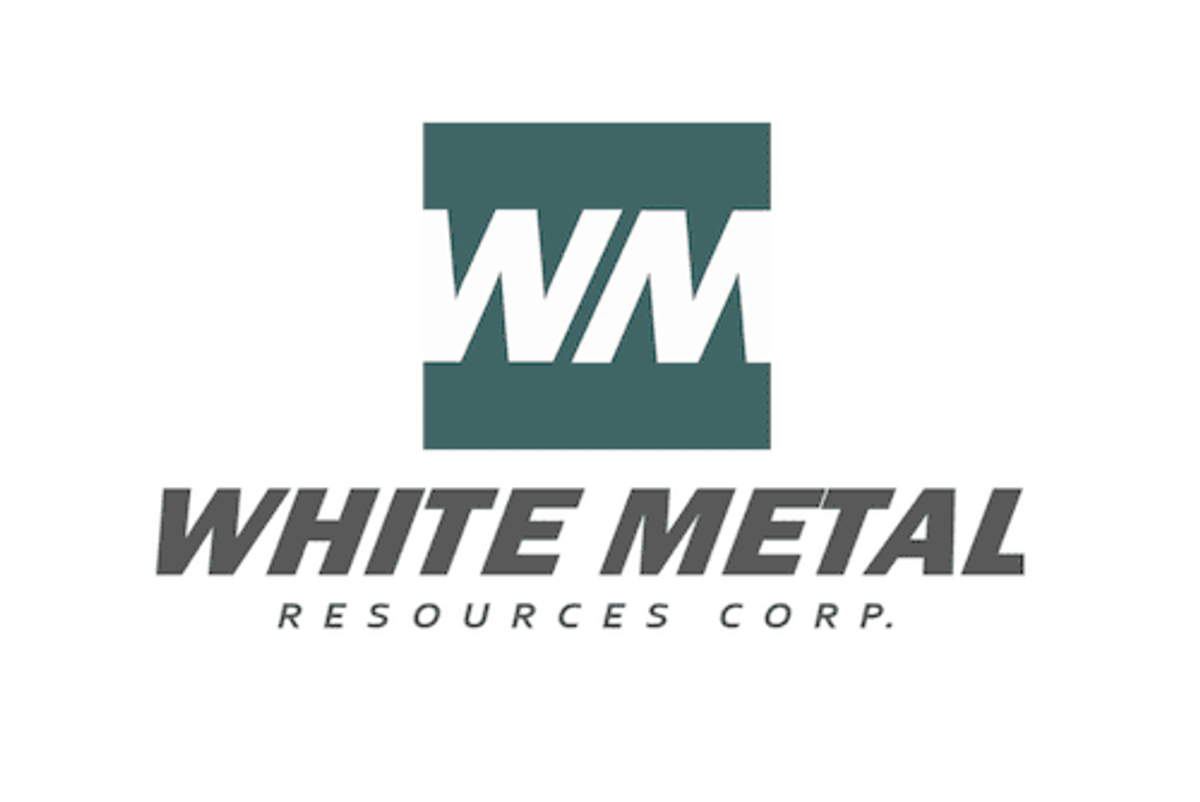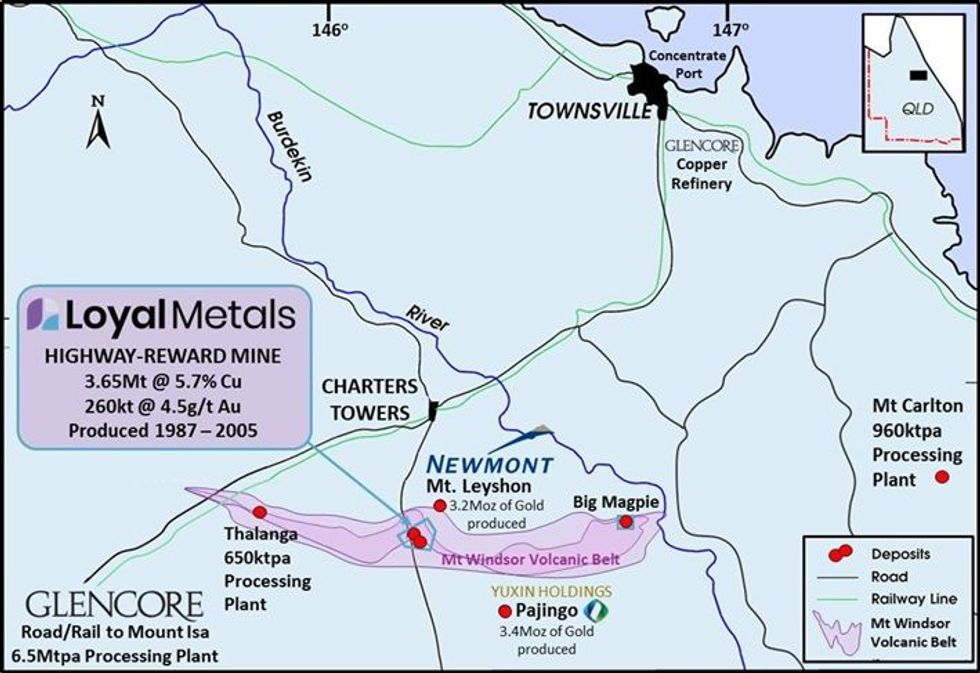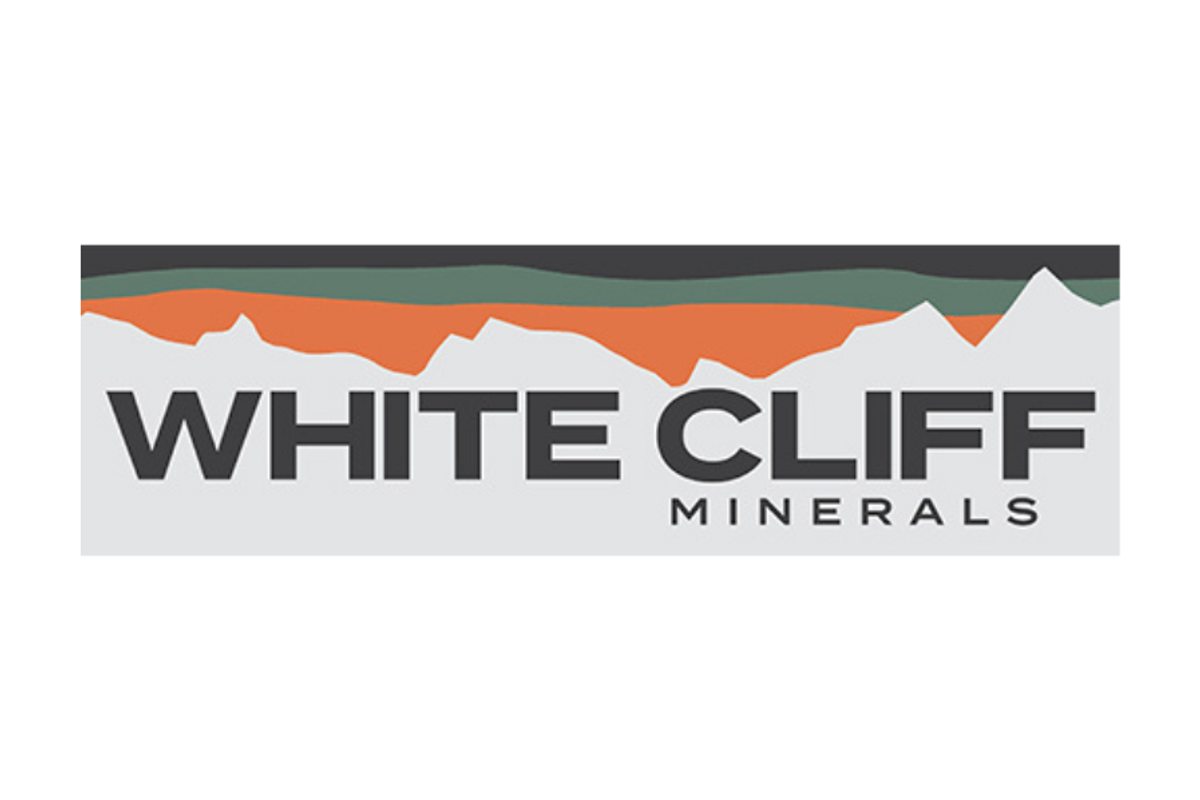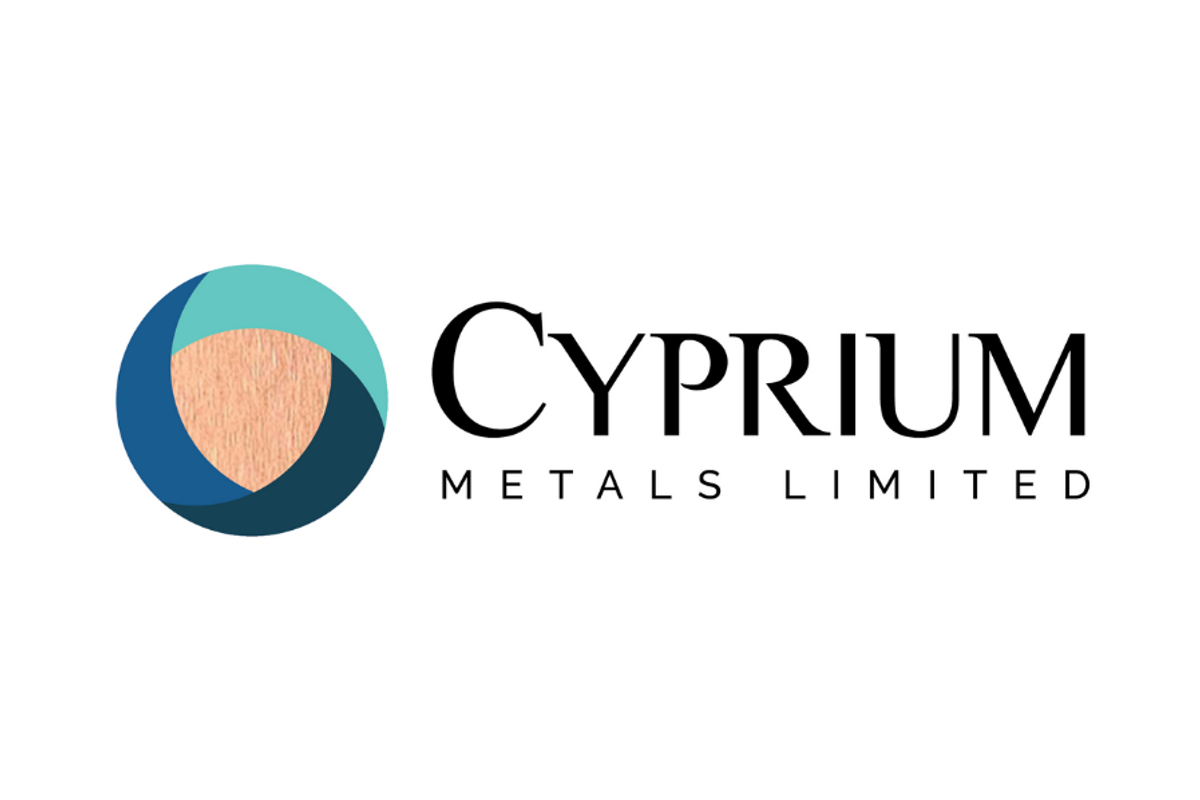
White Metal Resources Corp. (TSXV: WHM) ("White Metal" or the "Company") has received notification from Quadro Resources Ltd. that it is withdrawing from the Seagull option agreement signed February 18, 2020, citing the need to focus on their gold projects in Newfoundland.
Michael Stares, President and CEO of the Company, stated, "This provides an excellent opportunity for the Company to find a quality partner who is committed to advancing this highly prospective Project. The Property has not seen any serious exploration work since 2005 and given the strong performance outlook for platinum, palladium and rhodium, we believe this Project deserves further exploration."
The primary target in the Project area is the Seagull Lake Intrusion ("SLI"), described as a 10 km diameter, circular intrusive composed of ultramafic rocks with a high olivine content and derived from a deep mantle source. Layering and multiple phases of intrusion have been recognized, creating a favourable setting for Noril'sk Type sulphide accumulation. The SLI is located in the Nipigon Plate, which is interpreted to represent the failed third arm of a Proterozoic-aged, mid-continent rift system, the bulk of which lies beneath Lake Superior to the south. This rifting event is interpreted to be associated with significant Cu-Ni-PGE mineralization such as the Duluth Gabbro Complex deposits (Dunka Road, Minnamax, Local Boy, etc.) in Minnesota, USA, the Eagle Nickel Mine (Lundin Mining) in Michigan, USA, and the Great Lakes Nickel deposit in Ontario. Known platinum group element-copper-nickel zones in the intrusion support the interpretation that Proterozoic ultramafic intrusions in this area of the Nipigon Plate have undergone magmatic processes that are capable of producing large PGE-Cu-Ni sulphide deposits (see Company news release dated March 12, 2019).
Three styles of PGE mineralization have been identified in the SLI: (1) near surface, PGE-rich detrital "black sands"; (2) magnetite associated, PGE-rich layers or "reef-type"; and, (3) sulphide associated, basal Cu-Ni-PGE mineralization, interpreted as "Noril'sk-type". Although the detrital and reef-type mineralization was the first style known in the SLI, the discovery of Noril'sk-type Cu-Ni-PGE sulphide mineralization became the focus for subsequent exploration programs, which reported from diamond drilling 3.6 g/t Pt+Pd, 0.34% Cu and 0.21% Ni over 2.1 metres and 1.04 g/t Pt+Pd, 0.14% Cu and 0.16% Ni over 16.0 metres (from Pettigrew, 2002). The possibility for the discovery of other styles of sulphide mineralization remains, including Contact-type deposits (e.g., Lac des Iles Mine and River Valley Deposit, Ontario) and structurally hosted high-grade concentrations along regional fault systems. It is important to note that the SLI contains anomalous concentrations of additional platinum group elements rhodium, iridium, osmium, and ruthenium. The current spot price of rhodium is approximately US$12,700 per troy ounce.
Historical Diamond Drilling
The most recent diamond drilling and re-sampling of historical drill holes was completed by Platinum Group Metals ("PTM") between 2001 and 2005. This work reported encouraging concentrations of PGE from drill core intercepts with the highest concentrations of PGE reported in 2005 (see PTM news release dated 01/04/2005). PTM reported that their exploration drilling had demonstrated lateral continuity of the mineralized zones within the SLI Seagull Intrusion and that they were typically characterized by near 1:1 platinum to palladium ratios, significant Cu and Ni grades and strongly elevated concentrations in the other "rarer PGEs" (Rh, Ir, Os, Ru). PTM also noted that historical PGE-Cu-Ni intercepts from the SLI compare favourably to the famous Merensky Reef in South Africa's Bushveld Complex with known mineralized horizons at the SLI being considerably shallower than those currently being mined and explored in South Africa.
PTM reported on "total PGE" analyses from drill core which in addition to platinum and palladium included the "rarer PGEs" rhodium, iridium, osmium, and ruthenium (Table 1). PTM noted that the concentrations of the "rarer PGEs" were unusually high compared to their global database of PGE mines, deposits and occurrences (see PTM news release dated 22/04/2005).
Table 1. Historical drill core assay results with total PGE (Platinum Group Metals Inc., 22/04/2005).
| Drill Hole | Horizon | From | To | *Int | Au | Pt | Pd | Ir | Os | Rh | Ru | 6PGE+Au |
| (m) | (m) | (m) | (ppb) | (ppb) | (ppb) | (ppb) | (ppb) | (ppb) | (ppb) | (g/t) | ||
| WM05-20 | Lower | 329.12 | 333.40 | 4.28 | 47 | 826 | 895 | 120 | 151 | 54 | 41 | 2.13 |
| incl. | 331.68 | 333.40 | 1.72 | 88 | 1526 | 1640 | 221 | 289 | 99 | 71 | 3.93 | |
| incl. | 331.68 | 332.12 | 0.44 | 220 | 3690 | 3990 | 674 | 891 | 294 | 204 | 9.96 | |
| WM00-01 | Lower | 577.30 | 581.54 | 4.24 | 60 | 669 | 781 | 79 | 114 | 37 | 27 | 1.77 |
| incl. | 578.16 | 580.00 | 1.84 | 78 | 852 | 993 | 125 | 188 | 54 | 40 | 2.33 | |
| WM00-05 | Peridotite | 734.45 | 736.00 | 1.55 | 134 | 1731 | 2069 | 39 | 54 | 30 | 10 | 4.07 |
| incl. | 735.43 | 736.00 | 0.57 | 251 | 3250 | 3920 | 58 | 83 | 50 | 13 | 7.63 | |
| WM00-06 | Peridotite | 390.23 | 391.29 | 1.06 | 2 | 505 | 623 | 18 | 22 | 13 | 15 | 1.20 |
| WM00-01 | Upper | 533.14 | 536.41 | 3.27 | 30 | 223 | 260 | 26 | 29 | 13 | 10 | 0.59 |
*it is not known if these drill hole intervals represent true widths and are therefore being treated as core length intersections.
Drill hole WM05-20, which contains the shallowest intercept to date of the Lower Dunite Reef, between 329.12 and 333.40 metres vertical depth, returned 6PGE (Pt, Pd, Rh, Ir, Os, Ru) plus Au concentrations ("6PGE+Au") of 2.13 g/t over 4.28 m, including 3.93 g/t 6PGE+Au over 1.72 m, and 9.96 g/t 6PGE+Au over 0.44 metres. PTM also reported a high-grade intercept from the Peridotite Zone (drill hole WM00-05) that returned 7.63 g/t 6PGE+Au, within a broader intercept of 1.55 metres grading 4.07 g/t 6PGE+Au.
Re-sampling of quartered drill core from the Lower Dunite Reef Zone (drill hole WM00-01) returned 1.84 m of 2.30 g/t 6PGE+Au within a broader zone, between 577.3 and 581.54 m vertical depth, of 4.24 m grading 1.76 g/t 6PGE+Au. PTM's re-sampling also confirmed the presence of the Upper Dunite Reef Zone in hole WM00-01 over a 3.27 m interval between 533.14 and 536.41 m, grading 0.57 g/t 6PGE+Au. Re-logging and re-sampling of drill hole WM00-06, collared approximately 600 m east of hole WM00-05, also intersected the Peridotite Zone and returned 1.20 g/t 6PGE+Au over 1.06 m between 390.23 and 391.29 metres. Hole WM00-06 is 1,150 m (1.15 km) southwest of the previously reported high-grade Peridotite Zone intercept of 6.21 g/t 6PGE+Au over 0.65 metres in drill hole WM04-17. Both the Upper and Lower Dunite Reefs were also identified in hole WM05-22 which returned lower concentrations of PGE.
A Qualified Person has not independently verified the historical data and the scientific and technical information disclosed in this news release.
Technical information in this news release has been reviewed and approved by Dr. Scott Jobin-Bevans (P.Geo.), Vice President Exploration and a Director of White Metal, who is a Qualified Person under the definitions established by the NI 43-101.
About White Metal Resources Corp (TSXV: WHM):
White Metal Resources Corp. is a junior exploration company exploring in Canada. For more information please visit the Company's website at www.whitemetalres.com.
On behalf of the Board of Directors of White Metal Resources Corp.
"Michael Stares"
Michael Stares
President & CEO, Director
Neither the TSX Venture Exchange nor its Regulation Services Provider (as that term is defined in the policies of the TSX Venture Exchange) accepts responsibility for the adequacy or accuracy of this release.
For further information contact:
Michael Stares
684 Squier Street
Thunder Bay, Ontario, Canada, P7B 4A8
Phone: (807) 358-2420 Fax: (807) 475-7200
To view the source version of this press release, please visit https://www.newsfilecorp.com/release/71844

 Figure 1 Highway Reward Copper Gold Mine: Located 37 km south of Charters Towers within the Mount Windsor Volcanic Belt. Accessible via an all-weather highway, 172 km from the Port of Townsville, Queensland, Australia.
Figure 1 Highway Reward Copper Gold Mine: Located 37 km south of Charters Towers within the Mount Windsor Volcanic Belt. Accessible via an all-weather highway, 172 km from the Port of Townsville, Queensland, Australia. Graph 1: Highway Reward Copper Gold Mine - mining ceased in July 2005: 28 Years of Commodity Growth
Graph 1: Highway Reward Copper Gold Mine - mining ceased in July 2005: 28 Years of Commodity Growth



